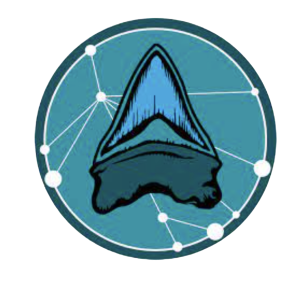K-12 Learning Standards
Florida State Standards (CPALMS)
6th Grade Standards
- SC.6.N.1.1: Define a problem from the sixth grade curriculum, use appropriate reference materials to support scientific understanding, plan and carry out scientific investigation of various types, such as systematic observations or experiments, identify variables, collect and organize data, interpret data in charts, tables, and graphics, analyze information, make predictions [G], and defend conclusions.
- Related Modules: 1
- SC.6.N.1.4: Discuss, compare, and negotiate methods used, results obtained, and explanations among groups of students conducting the same investigation.
- Related Modules: 1, 2, 3, 4
- SC.6.N.2.3: Recognize that scientists who make contributions to scientific knowledge come from all kinds of backgrounds and possess varied talents, interests, and goals.
- Related Modules: 2, 3, 4
- SC.6.N.3.4: Identify the role of models in the context of the sixth grade science benchmarks.
- Related Modules: 2, 3, 4
- SC.6.L.15.1: Analyze and describe how and why organisms are classified according to shared characteristics with emphasis on the Linnaean system [G] combined with the concept of Domains.
- Related Modules: 1, 2, 3, 4
7th Grade Standards
- SC.7.N.1.1: Define a problem from the seventh grade curriculum, use appropriate reference materials to support scientific understanding, plan and carry out scientific investigation of various types, such as systematic observations or experiments, identify variables, collect and organize data, interpret data in charts, tables, and graphics, analyze information, make predictions, and defend conclusions.
- Related Modules: 1
- SC.7.N.1.3: Distinguish between an experiment (which must involve the identification and control of variables) and other forms of scientific investigation and explain that not all scientific knowledge is derived from experimentation.
- Related Modules: 2, 3, 4
- SC.7.N.1.5: Describe the methods used in the pursuit of a scientific explanation as seen in different fields of science such as biology, geology, and physics.
- Related Modules: 1
- SC.7.N.3.2: Identify the benefits and limitations of the use of scientific models.
- Related Modules: 2, 3, 4
- SC.7.L.15.1: Recognize that fossil evidence is consistent with the scientific theory of evolution that living things evolved from earlier species.
- Related Modules: 1, 2, 3, 4
- SC.7.L.15.2: Explore the scientific theory of evolution by recognizing and explaining ways in which genetic variation and environmental factors contribute to evolution by natural selection [G] and diversity of organisms.
- Related Modules: 1, 2, 3, 4
- SC.7.L.15.3: Explore the scientific theory of evolution by relating how the inability of a species to adapt within a changing environment may contribute to the extinction of that species.
- Related Modules: 3, 4
8th Grade Standards
- SC.8.N.1.1: Define a problem from the eighth grade curriculum using appropriate reference materials to support scientific understanding, plan and carry out scientific investigations of various types, such as systematic observations or experiments, identify variables, collect and organize data, interpret data in charts, tables, and graphics, analyze information, make predictions, and defend conclusions.
- Related Modules: 1
- SC.8.N.1.2: Design and conduct a study using repeated trials and replication.
- Related Modules: 3
- SC.8.N.1.3: Use phrases such as “results support” or “fail to support” in science, understanding that science does not offer conclusive ‘proof’ of a knowledge claim.
- Related Modules: 2, 3, 4
- SC.7.N.3.2: Identify the benefits and limitations of the use of scientific models.
- Related Modules: 2, 3, 4
- SC.8.N.1.4: Explain how hypotheses are valuable if they lead to further investigations, even if they turn out not to be supported by the data.
- Related Modules: 2, 3, 4
- SC.8.N.1.5: Analyze the methods used to develop a scientific explanation as seen in different fields of science.
- Related Modules: 1
- SC.8.N.1.6: Understand that scientific investigations involve the collection of relevant empirical evidence, the use of logical reasoning, and the application of imagination in devising hypotheses, predictions, explanations and models to make sense of the collected evidence.
- Related Modules: 3, 4
NGSS Equivalencies
Middle School Standards
- MS-LS4-1 Biological Evolution: Unity and Diversity Analyze and interpret data for patterns in the fossil record that document the existence, diversity, extinction, and change of life forms throughout the history of life on Earth under the assumption that natural laws operate today as in the past.
- Related Modules: 1, 2, 3, 4
- MS-LS3-2 Biological Evolution: Unity and Diversity Apply scientific ideas to construct an explanation for the anatomical similarities and differences among modern organisms and between modern and fossil organisms to infer evolutionary relationships.
- Related Modules: 1, 2, 3, 4
- MS-LS3-2 Biological Evolution: Unity and Diversity Apply scientific ideas to construct an explanation for the anatomical similarities and differences among modern organisms and between modern and fossil organisms to infer evolutionary relationships.
- Related Modules: 1, 2, 3, 4
- MS-ETS1-2 Engineering Design Evaluate competing design solutions using a systematic process to determine how well they meet the criteria and constraints of the problem.
- Related Modules: 2
- MS-ETS1-3 Engineering Design Analyze data from tests to determine similarities and differences among several design solutions to identify the best characteristics of each that can be combined into a new solution to better meet the criteria for success.
- Related Modules: 1, 2, 3, 4
- MS-ETS1-4 Engineering Design Develop a model to generate data for iterative testing and modification of a proposed object, tool, or process such that an optimal design can be achieved.
- Related Modules: 1, 2, 3, 4
